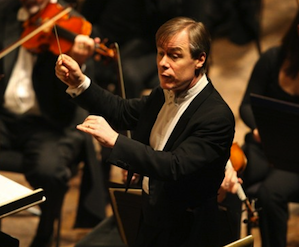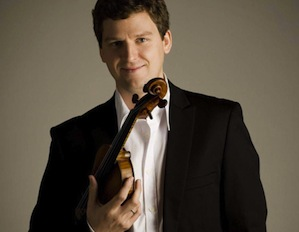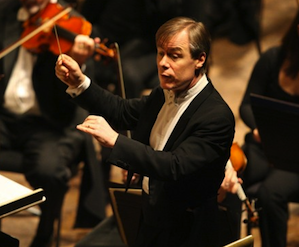The San Francisco Symphony may be the quasi–home team orchestra of note that performs at the Mondavi Center for the Performing Arts at UC Davis, but the St. Louis Symphony is giving them a run for the money.

This standout St. Louis orchestra, the nation’s second oldest, parsed out its appearance at Mondavi in a brilliant miniresidency. Over the span of less than a week, its musicians were charged with offering two orchestral programs and a skein of outdoor performances where it performed the work of UC Davis composers, as well as conducting master classes.
That’s proactive outreach, and the kind that is likely to become the future paradigm for all orchestras — and the St. Louis Symphony has never been a slouch when it comes to outreach.
Yet, in the final accounting, the best outreach that can be done is by selling the musical charms in a main stage performance. On Sunday evening, Music Director David Robertson did just that, in a program that offered the three “B’s.” But this was not your expected arrangement of Bach, Brahms, and Beethoven. As suits Robertson, who holds the 20th century repertoire dear, performing a “B” meant including a Berg violin concerto.
The last time the orchestra appeared at Mondavi, in 2010, it made a lasting impression with a bold and urgent reading of John Adams’ Doctor Atomic Symphony. Given Robertson’s fondness and facility with repertoire from the previous century, it would stand to reason that the Berg concerto, which was performed with a romantic elegance by violinist James Ehnes on Sunday, would be the highlight of a program offering Beethoven’s Symphony No. 2 and Brahms’ Variations on a Theme of Joseph Haydn.
Yet this was not the case. Despite a well-crafted and tautly paced performance of the Haydn, and a brilliant one of the Berg, it was the orchestra’s performance of Beethoven’s not-often-programmed Second Symphony that proved the high point.
Ehnes owns about as clear and precise a tone as can be found among today’s violinists.
So what did this orchestra impart to this work, especially one treated as the runt of the litter, when contrasted with the great calling card of Beethoven’s First Symphony and the groundbreaking aspect of the Third? The musicians gave the symphony a robust and virile feel, and they performed it in a self-conscious manner. The result was the seeding of the question: “Where has this Second Symphony been all this time?”

These musicians, under Robertson’s seemingly effortless direction, honored the dark-color boldness of its first movement and the light-hearted sentiment of the following ones. It was as if listening to this work had transformed the listener into a gallery walker, where that walker makes a seamless transition from the dark-colors vibe of a Velazquez painting to the yellows, reds, and whites of something rendered by Wayne Thiebaud.
For the most part, the Second is a youthful, uplifting work. It gives little hint that Beethoven, at 31, was already well-aware that fate had dealt him progressive hearing loss.
After imparting a bold and weighty aspect to the first movement, Robertson set about coaxing buoyant music from the musicians in the second and third movements, the latter being the first appearance of a scherzo in Beethoven’s orchestral output. Here was where the string section shone, and where the lack of self-consciousness in the playing (and, one could imagine, the writing) was imparted.The cloak of benediction that descends in the Adagio proved how deft Robertson was at marrying soloist to orchestra.
For his part, Ehnes played brilliantly, and the orchestra performed to match. Ehnes owns about as clear and precise a tone as can be found among today’s violinists. This proved somewhat of a limiting aspect with the Berg, however. The music was played with an almost Romantic refinement — no small accomplishment for a violinist. However, a certain grit, a tactile dirtiness, is demanded, but Ehnes’ playing was simply too clean. There was some outstanding playing from the orchestra in the concerto, especially from the woodwinds in their turn in the concluding Adagio where Berg injects the DNA of the Bach chorale Est ist genug from Cantata No. 60.
This two-movement work, each movement in two parts, is a game of emotional contrasts. Of the composers of the Second Viennese School, Berg’s music offers the most tonality and the most evident emotional content, and the orchestra had no problem selling the idea throughout. The bold incantation of the Allegro was solidly given, and the cloak of benediction that descends in the Adagio proved how deft Robertson was at marrying soloist to orchestra, where both need to accompany each other.

